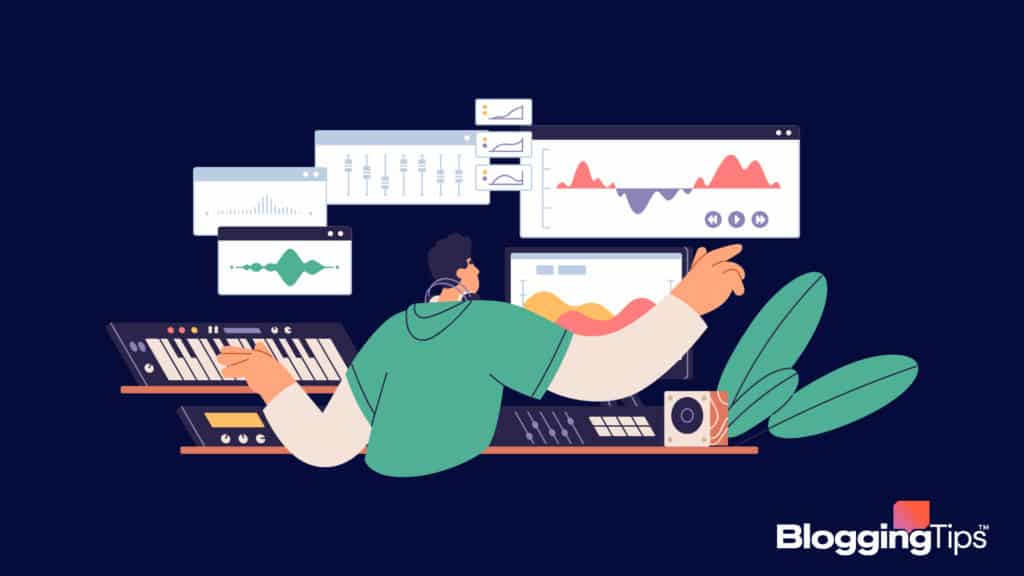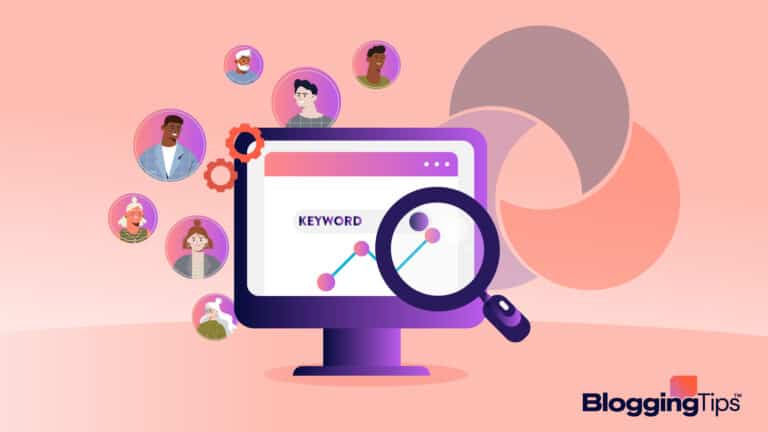There are numerous audio editing software tools available today.
Picking the best one can be somewhat challenging.
From removing background noise to pitch adjustment, you’ll need a program with numerous features.
We have chosen Adobe Audition as the best product for several reasons.
This powerful audio editor is suitable for Windows and Mac, and it’s perfect for mixing, mastering, and improving audio quality.
Keep reading to learn more about audio editing software programs and which is best for your personal needs.
- Best Audio Editing Software (Overview)
- An Overview of Audio Editing Software
- Features To Look for in Audio Editing Software
- Best Audio Editing Software: Our Top 3 Options [Ranked & Reviewed]
- The Best Free Audio Editing Software Options
- Notable Mentions: Other Audio Editing Software To Check Out
- Even More Options To Check Out
- Other Products Relevant to Audio Editing Software
- Frequently Asked Questions
- Wrapping Up
Best Audio Editing Software (Overview)
We’ve included an overview of our top picks below. For detailed information on each pick, scroll down.
Our Top Picks
- Adobe Audition – Our Top Pick
- Avid Pro Tools – Runner-Up
- Cockos Reaper – Budget Pick
Best Free Options
Notable Mentions
Additional Options
Quick Breakdown of Our Suggestions
Here are our picks for the best overall audio editing software, and the best free option, for those who may be on a tighter budget.
What is the Best Audio Editing Software?
The best audio editing software is Adobe Audition.
It features tools to mix and master recordings, add effects to make them crisp and tools to reduce background noise.
The software is suitable for various functions, including live music recordings, where the mastering tools and noise reduction are invaluable.
What is the Best Free Audio Editing Software?
The best free audio editing software is Audacity.
Audacity features various professional-grade options, and it is user-friendly to boot.
You can also download plug-ins to add more effects, features, import and export options, etc.
An Overview of Audio Editing Software
Here’s a breakdown of why audio editing software is an essential component of television, podcasts, music, movies, and other areas of the media.
What is Audio Editing Software?
Audio editing software gives users the digital tools to record, edit and even produce audio files.
There are various audio editors; some focus on spoken word and others emphasize music.
You can also refer to Audio editing software as a digital audio workstation or DAW.
Podcast hosting, video editing, DJing, and other media productions utilize this software to refine and edit audio.
Why is Audio Editing Software Important?
Audio editing software allows you to enhance the quality of recorded initial material by removing sound defects and adding sounds to improve its overall quality.
The goal is to get an excellent audio finish, and the best software for audio editing can help you with this.
One of the things needed to start a podcast, for instance, is a respectable audio editor.
You can improve the original audio considerably by enhancing the recording after the event.
Do I Need Audio Editing Software?
Editing audio files can become tedious and time-consuming; however, the best software programs to improve sound quality will make the process much easier.
If you have a podcast, you’ll want to make this investment immediately.
If you want professional-grade audio, you’ll need some of the best digital audio workstations and audio editing software around.
Features To Look for in Audio Editing Software
You must consider the type of audio you have to edit or record and what you’ll do with it when looking for audio editing software.
For example, electronic dance music production is very different from band and studio recordings, which in turn is different from recording and editing a podcast.
Below you’ll find more factors to be mindful about:
1. MIDI Compatibility
Musical Instrument Digital Interface allows instruments, computers, and other musical equipment to run on a DAW smoothly.
One key feature centers on editing your instrument’s performance down to every single note on a digital interface.
It has to have MIDI compatibility to be considered one of the best music editing software.
Even though every program on this list has this feature, FL Studio and Avid Pro Tools have the best MIDI sequencers.
2. Saving Formats
Top-notch audio editing software should have the capacity to export industry-standard audio formats.
If you want to use audio software together with video editing software, be sure to check the supported video formats.
For instance, Avid Pro Tools and Adobe Audition can support video formats such as MP4, MOV, AVI, and FLV.
3. Import and Export Audio Files
Capable of importing and exporting audio files: Having the option to import and export files is crucial because it allows you to move files seamlessly from one location to another without needing to re-record the files again.
It allows you to export your work in a different format when necessary.
4. Plug-ins and Add-ons
Plug-ins can get inserted into DAWs to improve the software’s functionality.
Plug-in features include sound effects, instruments, and more.
While some are free, some cost extra.
5. Noise Reduction
When recording digitally, recordings are always susceptible to background noises.
A noise reduction tool is useful when restoring audio files or editing.
Audio software such as Sound Forge, Audacity, and Avid Pro Tools have settings that reduce noise automatically.
These settings separate unwanted resonances and frequencies from your audio tracks, giving them a clean sound.
Best Audio Editing Software: Our Top 3 Options [Ranked & Reviewed]
Quality audio is always needed regardless of the media you specialize in.
Podcasts, radio, audiobooks, and music solely depend on audio and afford to compromise the quality of the sound.
Here are the top picks on the market today:
Adobe Audition: Our Pick
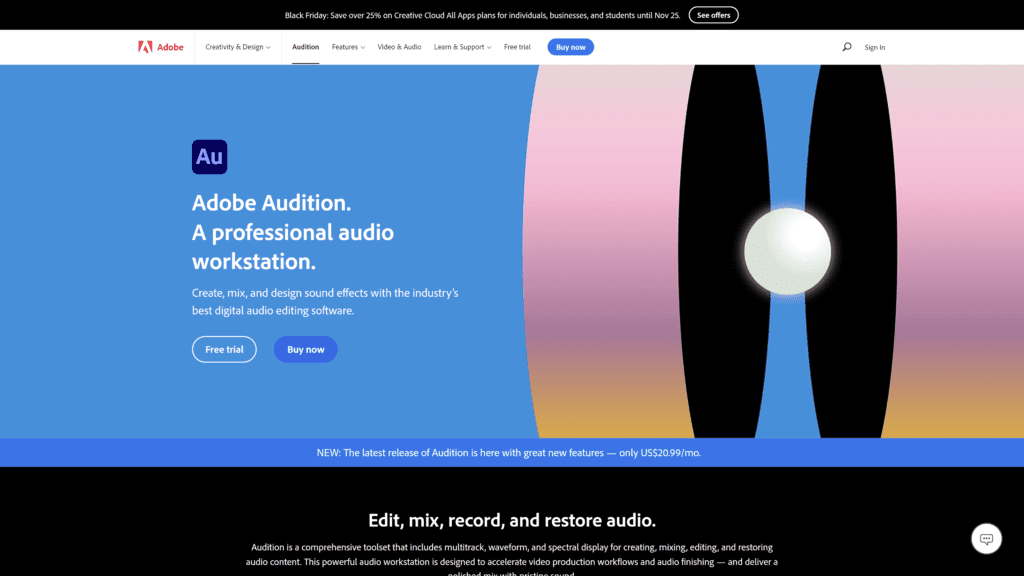
Adobe Audition is a thorough toolkit for audio editing and music production, allowing waveform, multi-track, and spectral display for editing, restoring, and mixing audio.
Although it’s not free, the result can enhance standalone audio and video finishing.
This superb audio app is available as part of the Adobe Creative Cloud or as a standalone app.
Key Features of Adobe Audition
- Strip Silence: The sound gets cleaned up on podcasts and interviews with this feature—it compensates for uneven volume too.
- Sound effect design: Sound designers can make sound effects for films, television shows, and video games. There’s even the option to choose sounds from the library, which has over 10,000.
- Loudness meter: Adobe Audition comes equipped with a loudness meter to ensure that all media aligns with loudness standards worldwide.
- Remix feature: The Remix features auto-fit music to match your video’s length.
- Customization options: Customization allows you to accommodate your workflow by customizing your layout.
Why is Adobe Audition a Great Solution?
Adobe Audition software provides all the best tools for editing and completing all audio projects, allowing you to record several sources simultaneously on different tracks.
You have your pick of the best sound effects, mixing, and mastering.
You can also reduce the background noise.
The end result is crisp and clean and sounds like it was made by a professional.
This option makes post-production, such as effects processing and editing, markedly easier.
All the above makes Adobe Audition software perfect for vloggers, podcasters, amateurs, and experts alike.
Pros of Adobe Audition
- Noise reduction: Contains powerful tools for mixing tracks and noise reduction.
- One-click functionality: You can save frequently used actions in the form of one-click options.
- Excellent customer service: If you get stuck, there’s a robust customer support team to help you with any questions.
Cons of Adobe Audition
- No free plan: After the free trial ends, you must pay for a subscription.
- Not beginner-friendly: Difficult for beginner audio editors to use.
- Lacks music composition tools: The music functionality is lacking and therefore is not ideal for music producers.
Adobe Audition vs. Other Top Recommendations: How They Compare
With Pro Tools, there’s a variety of plug-in selections.
Conversely, Adobe Audition focuses more on slightly better EQ’ing, multiband compressors, and noise-cleaning plug-ins instead.
Adobe Audition features Dynamic Linking, which works across the whole Adobe Suite, but Pro Tools has zero native cross-platform working pros.
Reaper, on the other hand, has many more features.
However, it comes with a steeper learning curve.
Reaper allows users to make many creative and technical musical decisions based solely on the sounds they want to include in their mix.
Adobe Audition Pricing
You can buy Adobe Audition software by subscribing to one of the company’s Creative Cloud offers.
- Audition (annual): $20.99/one-time payment
- Audition (monthly): $31.49/month
You can get Adobe Audition and all of Adobe’s professional products, such as Illustrator, Lightroom, Photoshop, and more.
It’ll cost you $52.99/month for an annual plan or $79.49 monthly.
Teachers and students can get the program for as little as $19.99/month.
Once you stop paying, Audition will stop paying, and you won’t keep anything.
Can You Try Adobe Audition for Free?
Yes, Adobe Audition offers a free seven-day trial.
Once the trial ends, you must pay for a subscription or lose access to everything you have created.
Conclusion: Should You Choose Adobe Audition?
Adobe Audition is an excellent professional-grade audio editing software from a reputable media production company.
This software is available as a standalone part of the Adobe Creative Cloud suite.
This software is used frequently by television, movie, and radio professionals.
The software has effects, diagnostics panels, and more.
Consequently, it’s very easy to edit any sound instantly.
Avid Pro Tools: Runner-Up

Pro Tools is a long-standing program used by professionals alike.
It is ideal for the pros because it includes comprehensive production and editing tools.
You can edit, produce, create, mix, master, and export high-quality on par with a professional studio album or a Hollywood movie.
With Pro Tools, you can compile several takes of fixed tracks’ timing, recordings and match the audio beats in real-time.
Key Features of Avid Pro Tools
- UVI falcon: Provides a 2.6 GB collection of the synthesizer and instrument samples with approximately 1,000 present clips.
- MIDI editor: The MIDI Editor can be used to manage all the details of the project. Also, you can export every session as a Sibelius file or sib.
- Mix window: You can view all the audio tracks using the mixing board style. You have the freedom to automate any parameter at any point on a given track.
- Collaboration: You can work with up to 10 users on the same project using the cloud-based collaboration functionality.
- AIR effects: When you are in a mixing session, the AIR effects will be beneficial.
Why is Avid Pro Tools a Great Solution?
This professional audio editor gets used regularly by studios worldwide as the default system for film editors, music producers, and more.
As a result, it’s a program designed to work well with physical controls.
With DAW, you get particular features such as 120fps support, Dolby Atmos editing, Netflix Post Technology, and even 4K.
When it comes to audio, you can work with 512 instrument tracks, 128 auxiliary tracks, and 1,024 MIDI tracks.
Pros of Avid Pro Tools
- Write while recording: You can write music even while your track is recording or input. You can even perform various musical editing adjustments.
- Supports multiple interfaces: The platform supports Avid Mojo DX, a variety of Blackmagic Design video interfaces, and Avid Nitris DX.
- Create more mixes: Use 768 voices/audio tracks to make larger mixes.
Cons of Avid Pro Tools
- Can be confusing to use: It may be overwhelming for a beginner regarding features.
- Lack of composition tools: More robust composition tools would be helpful.
- Buggy: There’s a chance that it doesn’t function well with third-party interfaces and plug-ins.
Avid Pro Tools vs. Other Top Recommendations: How They Compare
Reaper provides a better production process and usability; you just have to commit to the time it takes to configure it correctly.
Conversely, Pro Tools helps you to create the best sounding; however, it comes at a steeper price.
Both Pro Tools and Adobe Audition are excellent programs.
The two programs have basic features in common such as 32-bit files and regular updates.
Adobe Audition does have customization, auto-ducking, and more, while Pro Tools features time to stretch, MIDI, and more.
Avid Pro Tools Pricing
You can use the editing software with Avid Pro Tools for free and use it for as long as you need it.
The premium version offers a 30-day free trial, granting you access to the following features.
- Pro Tools Basic: Free
- Pro Tools Artist: $9.99/month
- Pro Tools Studio: $31.99/month
- Pro Tools Flex: $99.99/month
- Pro Tools: $299/year
Can You Try Avid Pro Tools for Free?
There is now an Avid Pro Tools free plan with a decent number of features.
However, you can also get a 30-day free trial for the premium versions.
Conclusion: Should You Choose Avid Pro Tools?
When it comes to large studios and big budgets, Pro Tools serves as the industry standard.
It’s a great choice for large studios looking to integrate their hardware with powerful software.
Pro Tools offers users a powerful workflow, and you can record up to four mics simultaneously.
Pro Tools audio engine can allocate host processing resources dynamically with a low-latency input buffer—all made possible with its 64-bit architecture.
Cockos Reaper: Budget Pick
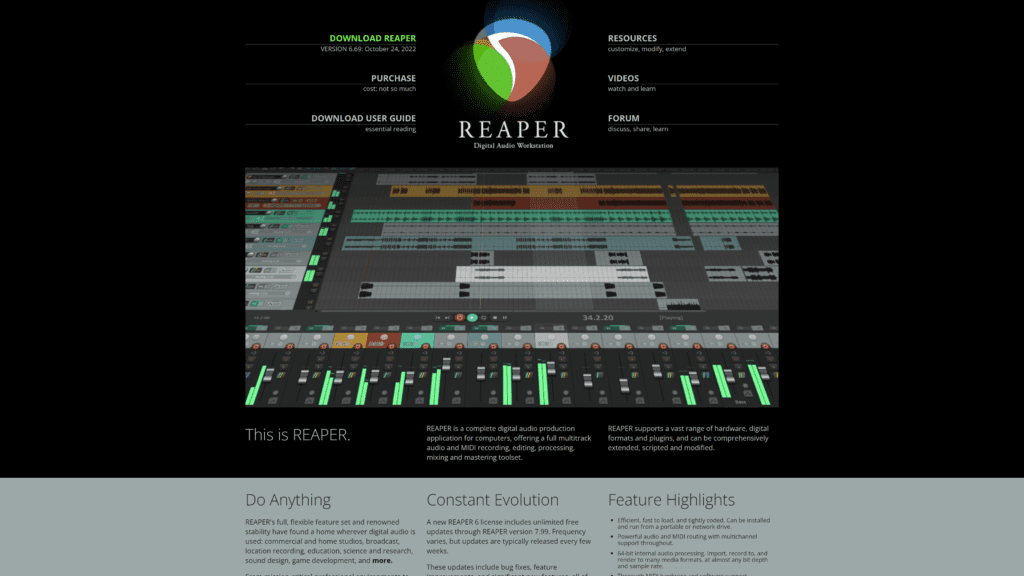
Use Cockos Reaper to edit, create, and mix music tracks in professional and home studios.
You have forward and backward compatibility for easy editing with over two hundred excellent-quality effects.
It’s amongst the best choices for music artists that want to produce high-end sound projects.
Key Features of Cockos Reaper
- MIDI CC envelopes: Instead of discrete events, manage your MIDI as a continuum of data envelopes. It produces better musical articulations and smoother effects.
- Auto-stretch timebase: This tool allows users to confirm and stretch sound to integrate with complex effects and audio enhancements. You can even do this with live recordings.
- Routing diagram: This feature displays a graphical patch to view and edit the routes in a song.
- Audio clips: Synchronize different audio files or create new clips with this editing tool.
- Dubbing: Popular video format support allows users to overdub video files.
Why is Cockos Reaper a Great Solution?
Reaper is the perfect choice for someone looking for an affordable editor that produces professional-sounding results.
Despite being challenging to learn, for advanced music producers, Reaper offers many ways to customize the program so that you can optimize the sound quality.
This program supports a massive selection of hardware, plug-ins, and digital formats.
Pros of Cockos Reaper
- Multiple tracks: The program can handle edits for more than one track at once, which is ideal for choir or orchestra recordings.
- Customization: Users can customize the toolbar for easier navigation and suit their preferences.
- Export features: You can export the final product as a MIDI file or an audio file to edit later in another DAW like Pro Tools.
Cons of Cockos Reaper
- No instruments: Other programs come with other sample instruments or built-in virtual instruments.
- Lower quality: The file types supported by Reaper do not meet the standards for professional studios.
- Difficult to learn: The UI is challenging for beginners without dedicating extensive time.
Cockos Reaper vs. Other Top Recommendations: How They Compare
When you compare Cockos Reaper to the top contenders, the software matches up well.
You’ll get a complimentary assortment of plug-ins with Reapers, but you have to pay for these add-ons with Pro Tools.
The best feature of Cockos Reaper is that the software has virtual instruments built into the interface.
The drag-and-drop editor makes it easy for users to drag any instrument from Reaper’s plug-in library to the instances for use with your media device.
Neither Adobe Audition Pro Tools has this feature.
Cockos Reaper Pricing
You have to pay for a license through Reaper:
- Commercial license: $225 per license
- Discounted license: $60 per license
The discounted license is only for businesses or individuals with gross yearly revenue of $20,000 or less.
Also, non-profit and educational organizations can use this discount to obtain a license.
The license lasts for two versions of the Reaper software.
For example, if you purchase the program when the 6.0 version comes out, you don’t have to get another license until the 8.0 version arrives.
You have to buy another license after the two versions have concluded.
Can You Try Cockos Reaper for Free?
Reaper offers a 60-day free trial period, no matter which license you purchase.
After the trial ends, you must pay for a license to continue using the platform.
Conclusion: Should You Choose Cockos Reaper?
Cockos Reaper is amongst the best audio editing tools for your basic needs.
Some people find the interface challenging to grasp, but aside from that, it comes highly recommended.
You can start with basic mixing and tracking or indulge in mastering and advanced routing tricks.
This software is more expensive than others, but it does offer value to your work and you get to try it for a few months to determine if it’s worth it.
The Best Free Audio Editing Software Options
Consider these free options for new media businesses just starting to establish their brand with a podcast.
Remember that you’ll need an audio editor if you choose this route.
Podcasts need editing software, while blogs do not.
Audacity
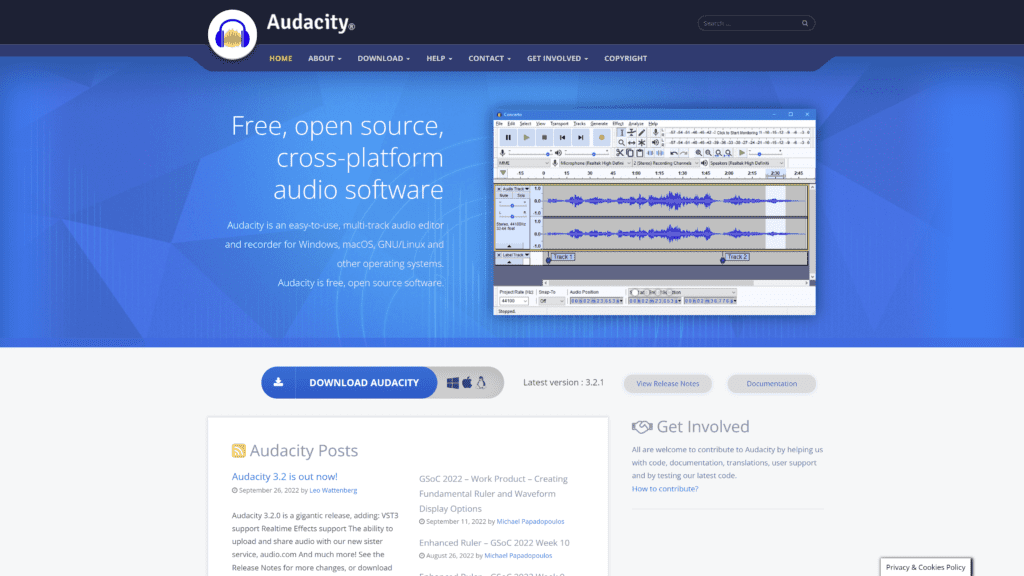
Audacity is an excellent free audio editing software program that you can use across multiple platforms like Linux, macOS, and Windows.
This full-featured program makes hosting a podcast, creating music, and doing other audio editing projects easier.
Perfect for at-home users and beginners, Audacity doesn’t take too long to pick up.
It’s also a fantastic choice for professionals, especially if you customize your user interface with precise plug-ins to suit your needs.
Why Is This a Great Option?
Audacity has many significant editing tools at your disposal, despite not offering as much visual polish as you can get from other editors.
You can also export and import sounds more easily with OGG, MP3, MIDI, and WAV formats.
Volunteers may contribute to Audacity.
For more features and mixing options, there are multiple plug-ins available.
Drawbacks to Audacity
Some users don’t like that Audacity is a destructive editor, which means that the original file gets changed if you make any edits.
Also, there aren’t any support options outside the user forum and community.
Lastly, there aren’t any sound effects or stock music with Audacity.
AudioDirector
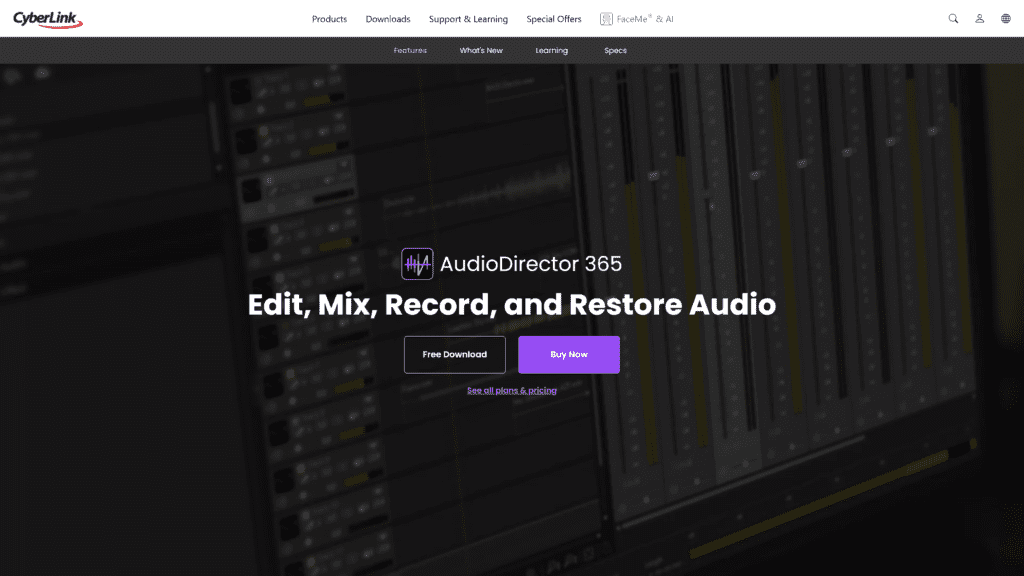
AudioDirector is a web-based online editor tool.
You don’t have to install it, and it doesn’t leave a footprint on your computer.
You only need a web browser such as Firefox or Chrome and a stable internet connection.
This audio editor is also user-friendly, and you can complete numerous sound editings projects like vocal removal, audio trimming, a voice changer, and a BPM finder.
Why Is This a Great Option?
AudioDirector is known as a one-stop shop for basic editing tasks.
Restoration methods like noise and wind removal are easy to use, and the interface design is straightforward.
Also, the robust AI correction tools help address a wide range of audio editing needs, such as mixing and mastering.
The layout is clean, the editor integrates well with creative apps, and you can easily shift between multiple projects using PowerDirector.
Drawbacks to AudioDirector
The only downside to this program is that you only upload audio files shorter than ten minutes and smaller than one hundred megabytes.
It’s excellent if you only have to edit small files, but it’s unsuitable for large projects.
Notable Mentions: Other Audio Editing Software To Check Out
There are some software programs that didn’t make our list of top picks, but they’re still excellent options that can benefit a variety of audio producers.
Apple Logic Pro X (for Mac)
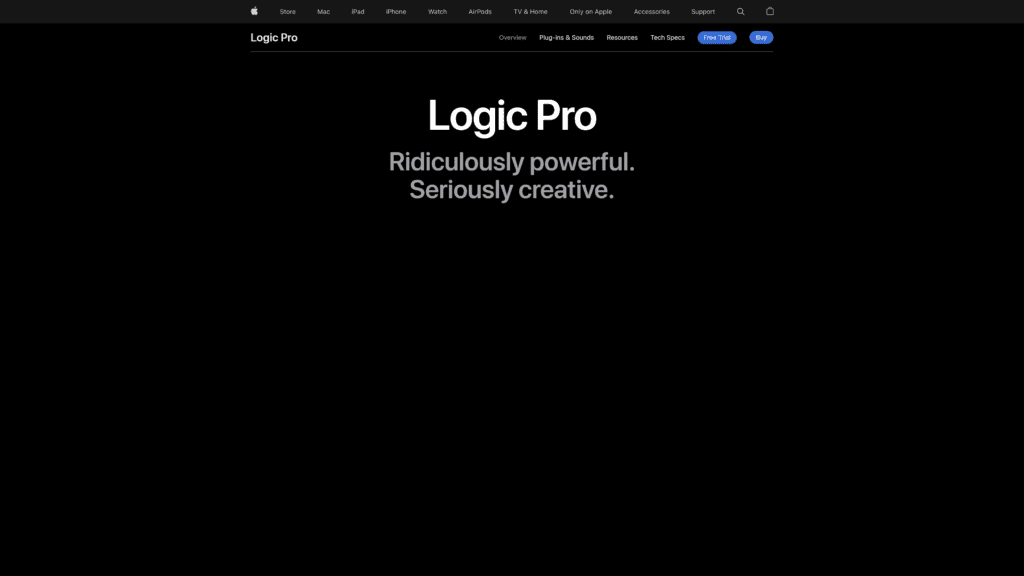
For those who love their Macbooks, Logic Pro X is the perfect solution.
It’s the best option for Mac users because the digital audio workstation has powerful features that you can extend with effects, plug-ins, and other sounds.
Whether you’re an individual who likes to create high-quality audio recordings or a professional DJ, Logic Pro has all the editing tools you’ll need.
Whether you’re a DJ working on a remix or Once installed, you have access to dozens of plug-ins, including a wide array of effects and 1,200 sampled instruments.
Why is Apple Logic Pro X (for Mac) a Great Option?
With access to more than one thousand sampled instruments, a wide range of effects, and tons of plug-ins, Logic Pro X is at the top of the list for Apple enthusiasts.
You can use it for film scoring, multi-track recording, and sound design.
It’s excellent for music producers.
Logic Pro can easily share with GarageBand and SoundCloud also.
Drawbacks to Apple Logic Pro X (for Mac)
Apple Logic Pro X is not user-friendly, so learning how to use it optimally will take time.
Also, you can’t customize the meters and faders.
You may experience bugs with various third-party plug-ins as well.
Apple Logic Pro X (for Mac) Pricing
You can make a one-time payment for lifetime access to Logic Pro X for $199.
Though this seems costly, it’s better than paying a monthly subscription, especially given the program’s quality.
It also comes with access to all updates.
Can You Try Apple Logic Pro X (for Mac) for Free?
You can download and try Apple Logic Pro X with a 90-day free trial before paying.
Apple GarageBand (for Mac)
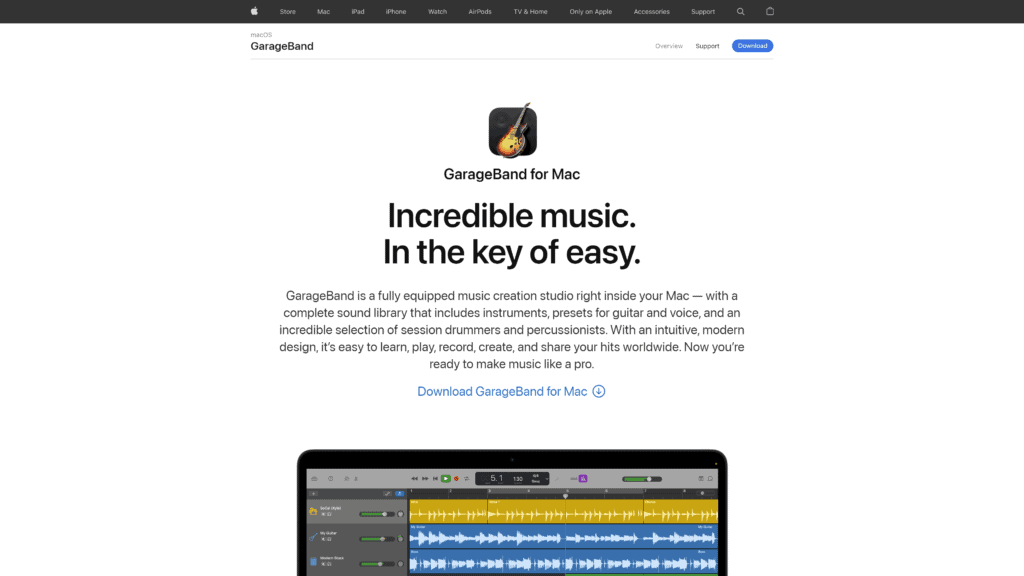
GarageBand is another Apple-specific product that’s fantastic for beginners and offers premium features.
Entry-level podcast hosts will enjoy integrating their Apple software to create a professional-sounding finished product.
GarageBand allows you to create music, edit, and record other audio pieces.
Instrument generators and valuable effects at your disposal will assist musicians with building multi-layer, complex audio projects.
Why is Apple GarageBand (for Mac) a Great Option?
Users can get started using GarageBand immediately because the interface has a familiar design to other Apple products, and the varied media library is free, extensive, and easy to navigate.
GarageBand is perfect as podcast software, and it is free when you purchase an Apple device.
Drawbacks to Apple GarageBand (for Mac)
The shortcomings of the GarageBand software start with large project files that take up too much space on a PC.
For example, a four-track podcast episode lasting just half an hour will use one gigabyte of storage.
Also, your Mac might start to run hot during use, and this program isn’t the best for professionals, as it doesn’t have many effects.
Apple GarageBand (for Mac) Pricing
With the purchase of a MacBook, GarageBand is free and offers easy music recording for beginners and novices alike.
Can You Try Apple GarageBand (for Mac) for Free?
Yes, you can use Apple GarageBand for free with the purchase of an Apple device.
PreSonus Studio One
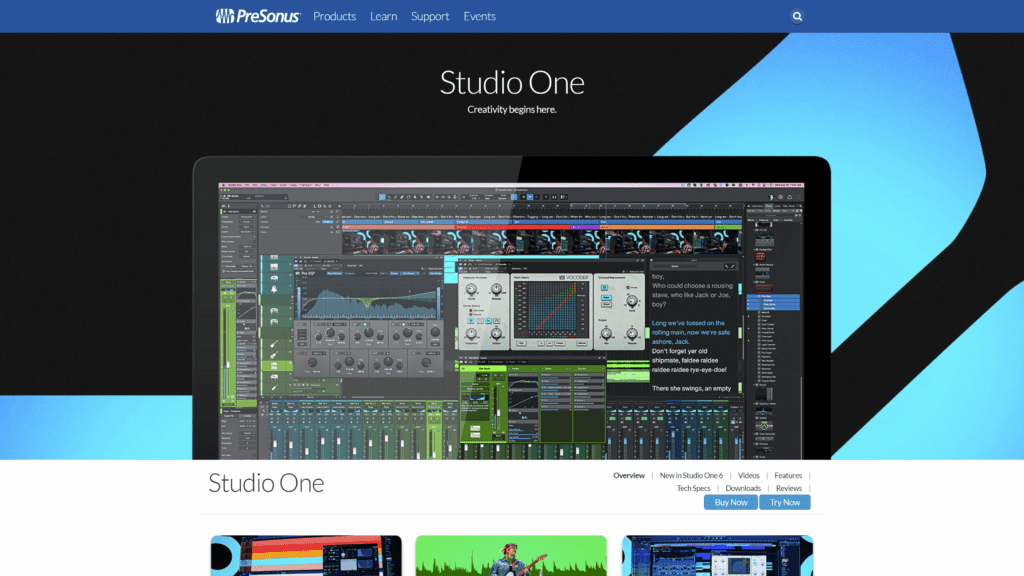
PreSonus Studio One is an excellent option for creating stunning beats and recording voice projects.
It’s an agile software program that is highly responsive.
You can instantly set up instruments using the drag-and-drop editor that includes picture guides.
Why is PreSonus Studio One a Great Option?
PreSonus is an excellent option because you can use the editing tools to perform basic to advanced functions.
For example, you can drag audio loops, presets, and virtual instruments directly into your session, convert MIDI to audio, and even remove glitches through easy-to-use plug-ins.
Drawbacks to PreSonus Studio One
Unfortunately, many people might wonder whether it’s worth it to purchase PreSonus Studio One because it has a cluttered interface and is a bit expensive.
You can get more features and similar capabilities with editors such as Avid Pro Tools.
PreSonus Studio One Pricing
You can always choose to pay for licensing or monthly/yearly subscriptions until you pay the total price with Studio One.
Here are the most popular plans:
- Studio One Artist: $99.95 (license); call for a monthly quote
- PreSonus Sphere: $14.95/month or $164.95 per year
- Studio One: $399.95 (license) call for a monthly quote
Can You Try PreSonus Studio One for Free?
PreSonus offers a 30-day free trial phase.
You’re allowed to enjoy all of the benefits and features without restrictions.
After the trial, you’ll automatically revert to the Prime Studio One version, which is free but lacks many features.
Sound Forge Audio Studio
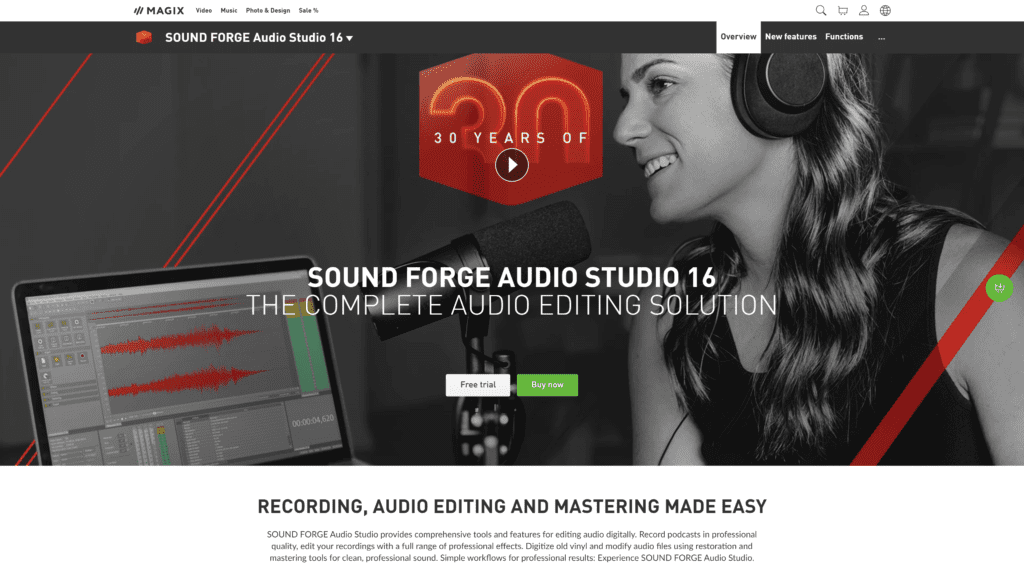
Sound Forge Audio Studio is a wonderful tool that features a comprehensive set of tools you can use to edit your audio clips for a professional outcome.
Some functions include transforming your vinyl and cassettes into digital audio works.
This editor can also create and burn CDs and make soundtracks for videos.
Why is Sound Forge Audio Studio a Great Option?
Sound Forge is a solid option for amateur and beginner audio editing tasks thanks to easy task assignments, an instant action window to make the workflow more efficient, and an extensive plug-in library.
You can preview the sound of your effects before you add them to the final products, and the toolbar is fully customizable for easy navigation.
Drawbacks to Sound Forge Audio Studio
One of the significant drawbacks to using Sound Forge is that the compatibility between the new and old versions was sometimes frustrating when various elements didn’t transfer over.
The noise removal feature could be better; sometimes, the recordings sound distorted.
Lastly, the upgrades are expensive, and the program can sometimes lag.
Sound Forge Audio Studio Pricing
For access to the entire suite, here are the packages:
- Sound Forge Audio Studio: $49.99/month
- Sound Forge Audio Studio 365: $4.99/month
Can You Try Sound Forge Audio Studio for Free?
There is a light version of the Sound Forge software, and this program is free.
However, you’ll miss many features you get with the full version.
There is no free trial with this program.
Ocenaudio
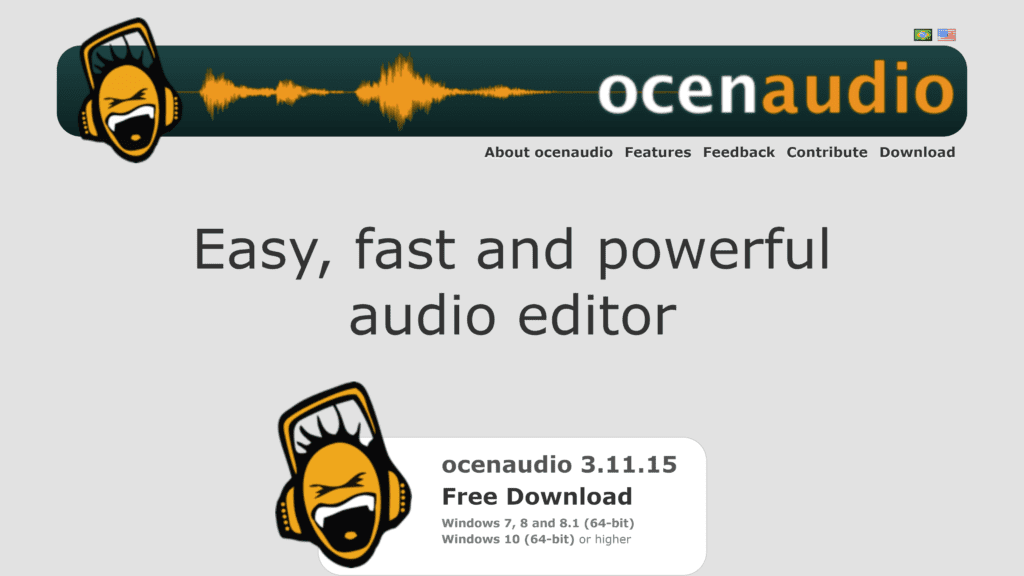
Ocenaudio is a top-notch audio editor with a spectrogram that offers a more precise sound analysis.
It has full features and compatibility with many other plug-ins and editing programs.
You can correct every tone and pitch of the audio file, and you get a preview in real-time for instant editing.
Why is Ocenaudio a Great Option?
Ocenaudio is an excellent option because it’s free and available globally, and the user interface is clean and easy to follow.
There are also keyboard shortcuts to help you edit more efficiently and finish projects sooner.
You can access files stored on the cloud and the computer.
Drawbacks to Ocenaudio
Ocenaudio doesn’t allow users to edit multiple tracks at once, and it’s best for simple stereo tracks and nothing complicated.
It’s also a destructive editor, so you can have a duplicate file that retains the original once you start editing.
Also, Ocenaudio doesn’t support many file formats.
Ocenaudio Pricing
Ocenaudio is free to use and comes with a variety of features for you to maximize your audio projects.
Can You Try Ocenaudio for Free?
Ocenaudio is a free audio editing software program.
There is no option to pay for more upgrades.
Hindenburg Journalist Pro
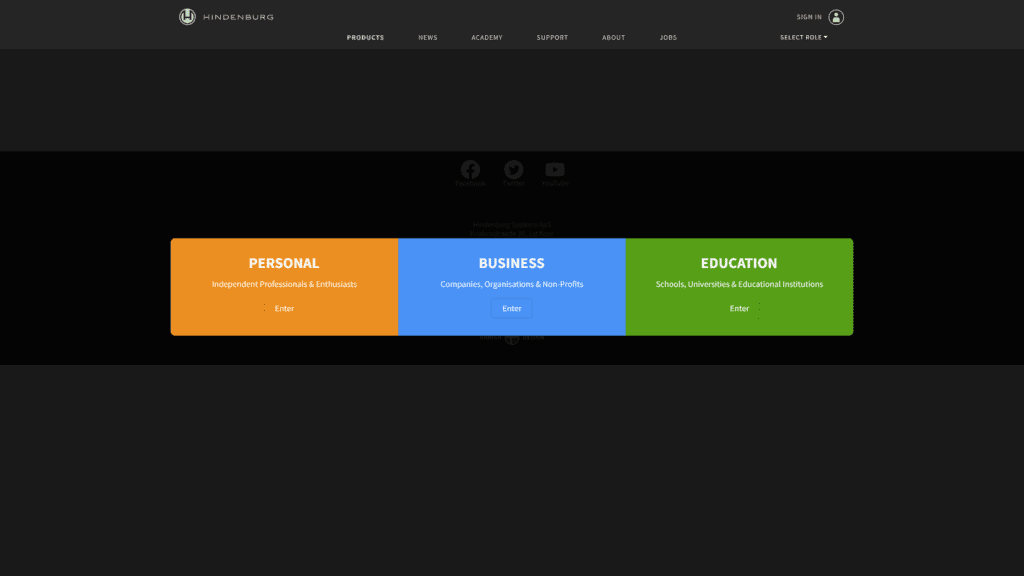
Hindenburg Journalist Pro is the best choice on our list if you have or want to start a podcast.
You can easily rearrange and cut recordings to transform them into a narrative.
It comes with a ton of features and doesn’t have a steep learning curve when you’re familiarizing yourself with the layout.
Why is Hindenburg Journalist Pro a Great Option?
Clean up your interviews, edit multiple tracks simultaneously, edit chapters, use the automatic leveling, automatically fix mixing problems, and more with Hindenburg.
Users love that they can create a pleasant listening experience for your audience
through balancing the audio or merging files.
Drawbacks to Hindenburg Journalist Pro
Hindenburg Journalist Pro costs more than its competitors, is more specific to a niche within the audio editing field, and has better music production or editing options.
Hindenburg Journalist Pro Pricing
Licensing prices:
- Journalist: $99 (one-time payment)
- Journalist Pro: $399 (one-time payment)
- HABC Narrator: $499 (one-time payment)
Also, a student/educator discount lowers the price to $85 for the Journalist plan and $225 for the Journalist Pro plan.
Can You Try Hindenburg Journalist Pro for Free?
You can try Hindenburg Journalist Pro free for 30 days before committing to one of the paid tiers.
This free trial doesn’t have any restrictions.
Even More Options To Check Out
Though these options may not have made our top picks, they are still excellent choices that can assist various media artists.
AudioLab
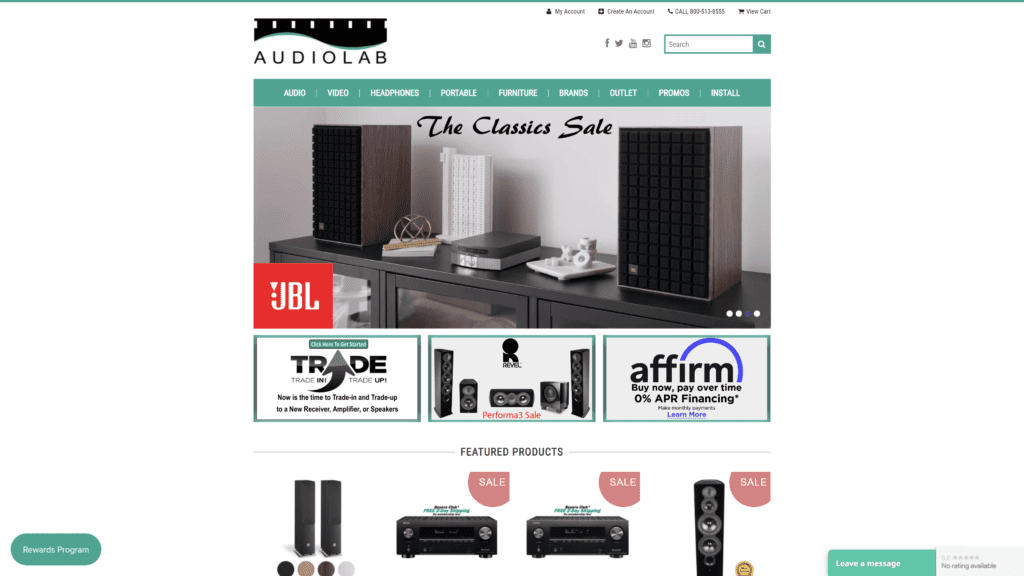
Audio Lab is an Android app where you can convert, merge, trim, tag, mix, change speed, reduce noise, and many other features without paying a dime.
While it’s not close to the power level for some of our other choices, it’s a great smartphone audio editor.
This app isn’t great for much more than basic editing, ringtones, and social media, and you have to pay to get more features that likely won’t make much of a difference.
Ashampoo Music Studio
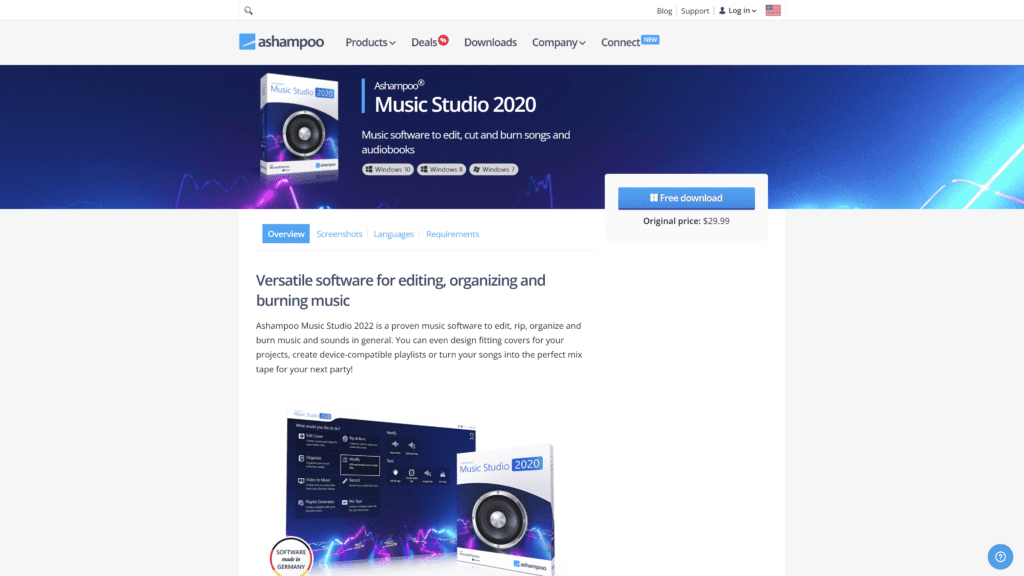
Ashampoo Music Studio is a solid editing tool that offers complete solutions for various forms of media.
You can directly extract audio from CDs and videos, import an entire folder or just one music track, and create custom playlists.
A built-in editor allows you to split music, adjust the volume, and more.
On the other hand, you can get much better features for a low price with other similar software options.
Also, there are still some bugs and security threats to address with this program.
Ableton Live
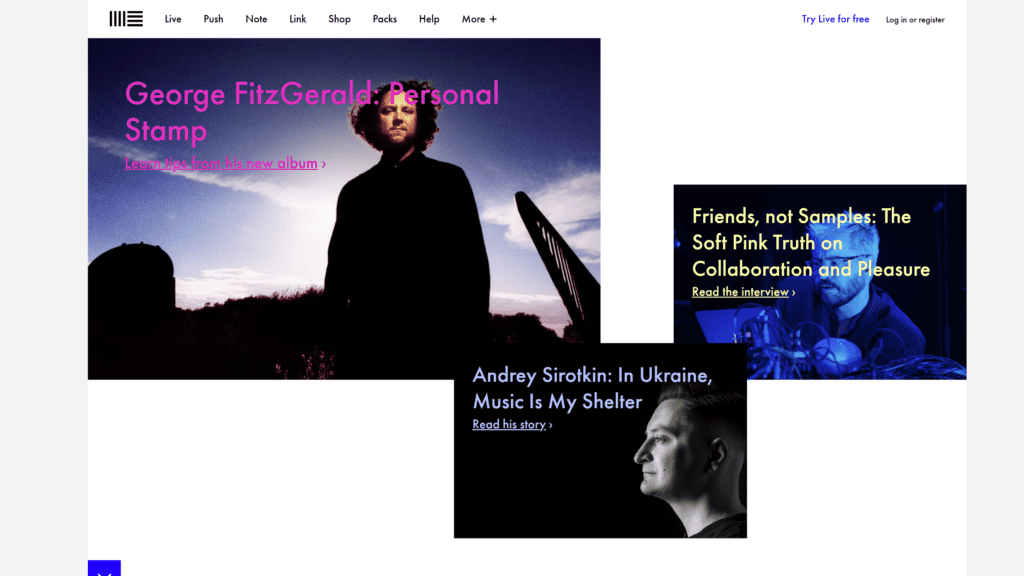
Ableton Live is a basic audio editor for music producers and creators.
It has custom tools that can create loops and new instrument sounds.
It works best for studio creations and live performance recordings.
Ableton is easy to use and comes with the essentials for an excellent song, beat, video, etc.
Ableton is expensive for the standard version and gets costlier if you want to upgrade for better features.
There’s also no track comping, you can’t fix the pitch, and there’s no notation view available.
Samplitude Pro
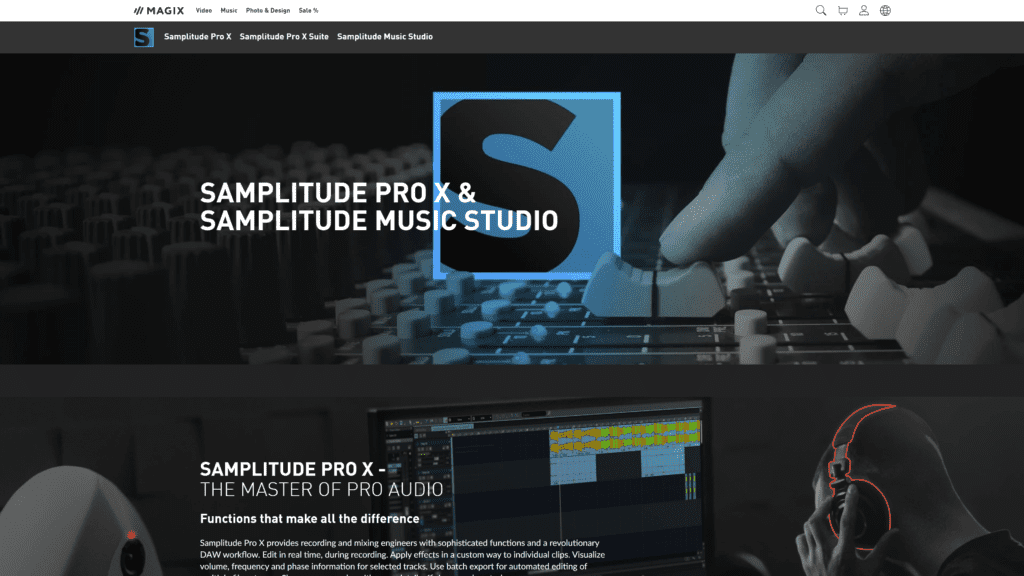
For professional musicians and producers, you’ll enjoy Samplitude Pro.
It’s one of the best tools on the market for recording and mastering.
It has many good features like noise reduction, splitting tracks, merging, importing, and more.
However, Samplitude has a steep learning curve, and there are better choices for podcasts, music video editing, and other media forms.
It also can have multiple glitches that stem from too many files stored on the system and too many plug-ins inserted.
Magix Sequoia
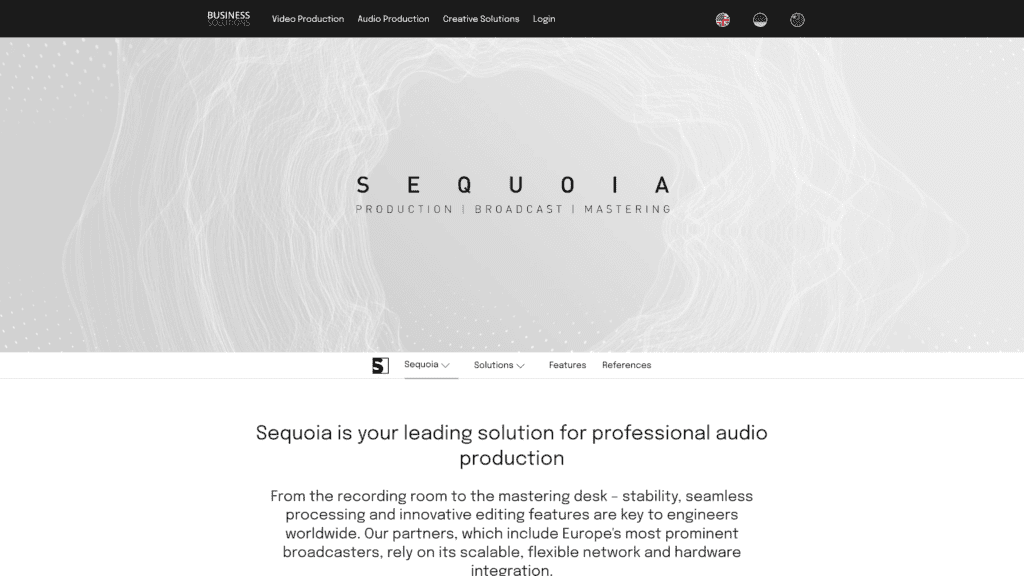
Magix Sequoia has been a top choice for many broadcasters and music professionals.
They have a responsive customer service team for assistance with distribution formats and mastering, top-notch crossfade editors, and four-point audio.
However, this software is costly, has a cluttered user interface, and is somewhat sluggish on a PC if you download too many plug-ins.
It can corrupt your files after you have spent a significant amount of time editing.
Steinberg Cubase Pro
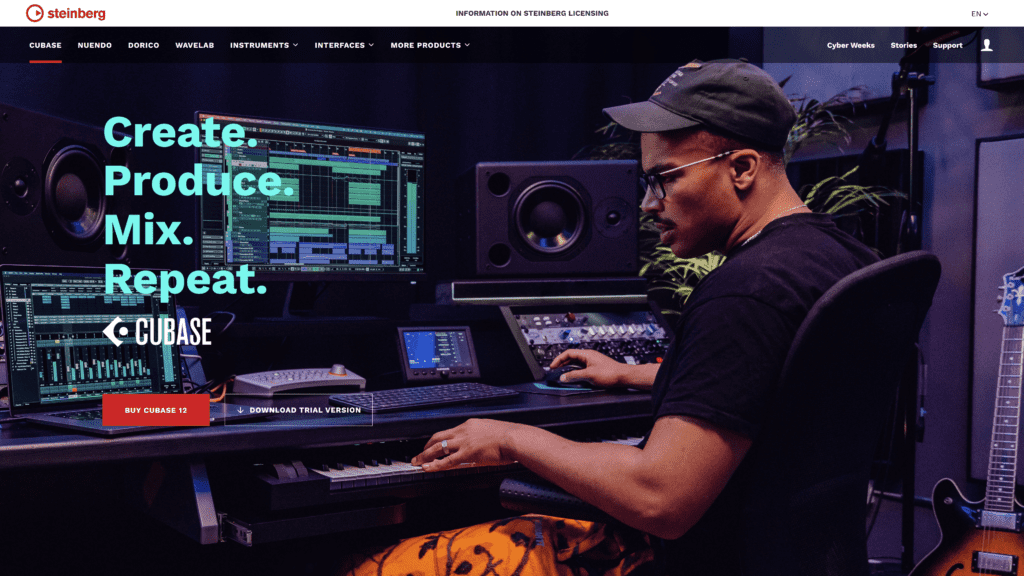
For a powerful audio editing tool, Steinberg Cubase is a serious consideration.
For creating, mixing, and producing masterpieces, Steinberg has all of the features you’ll need, plus some.
There are numerous effects and a wide array of virtual instruments, and you can sequence MIDI with audio easily.
It didn’t make it to the top of our list because it’s expensive and doesn’t offer consistent updates like some of the other choices on the list.
Other Products Relevant to Audio Editing Software
Though the following products aren’t versatile in terms of the type of audio files you can edit, they are ideal solutions for anyone interested in podcasting.
Podcast Editing Software: Review our list of the best software programs to take your podcast to the next level with a crisp, clean, and clear finish.
Podcasting Platforms: A solid podcast hosting platform provides users with adequate space and RSS feeds to store large audio files.
Check out our top picks for the best servers available.
Podcast Production Companies: Need to find a reputable company that can build podcasts for your listeners and grow your audience?
Know what to look for and the qualities of a good podcast production company.
Frequently Asked Questions
Here are the quick answers to a few commonly asked questions regarding audio editing software programs:
What software is best for audio editing?
The best software for audio editing is Adobe Audition, per our research.
Based on consumer reviews, ease of use, affordability, and capabilities, this feature-rich editing tool is perfect for various audio project types.
What is the easiest audio editing software?
The easiest audio editing software depends on the buyer’s experience level.
Someone with professional experience can handle the more advanced software platforms like Reaper or Logic Pro X.
Someone just learning how to edit music may have an easier time with Audacity or Ocenaudio.
Wrapping Up
Audio editing software makes creating, editing, and producing music, films, podcasts, and easier with elite features and tools.
Our top pick for the best overall audio editor is Adobe Audition.
It’s affordable, has somewhat of a learning curve but isn’t too difficult to learn, is MIDI-compatible, and saves multiple formats.
You can mix and master, reduce noise, edit multiple tracks at once, and more.
Avid Pro Tools is a close second, possessing all of the same features and a few more, with a slightly less refined finished product.
We recommend purchasing either of these two editing rolls for top-tier audio editing, but the other options may also suit your needs better, depending on your audio project goals.
